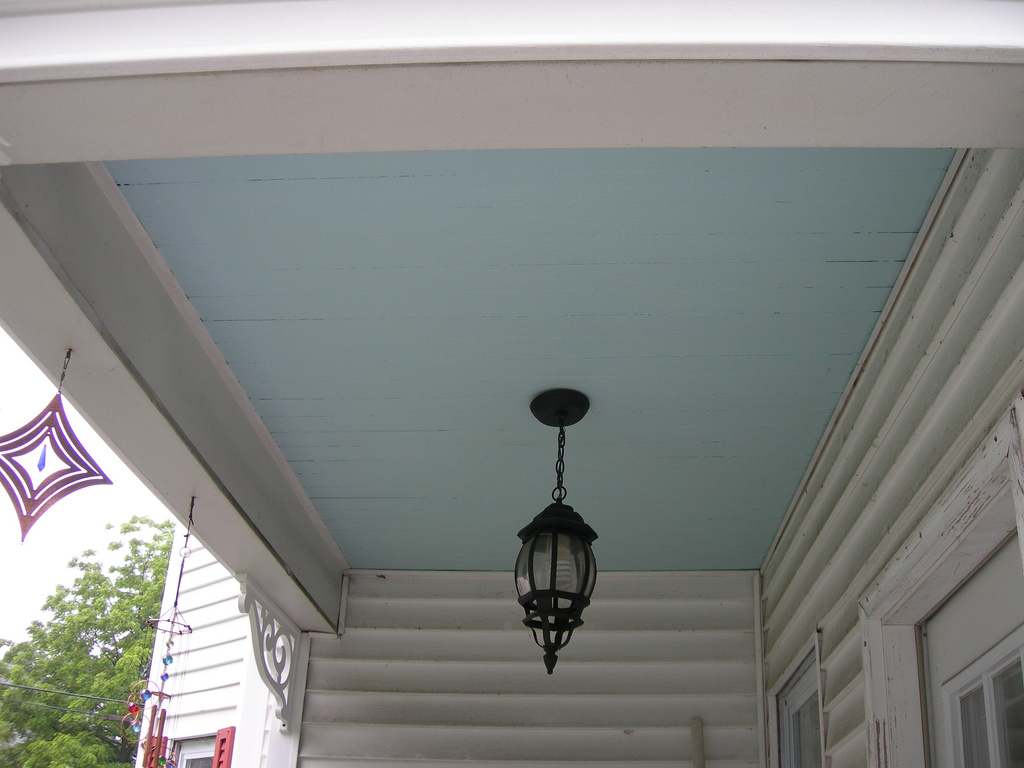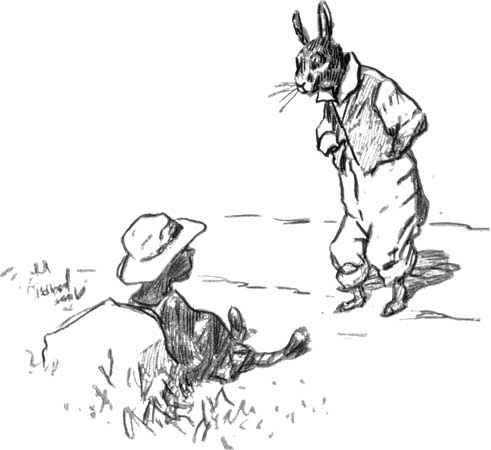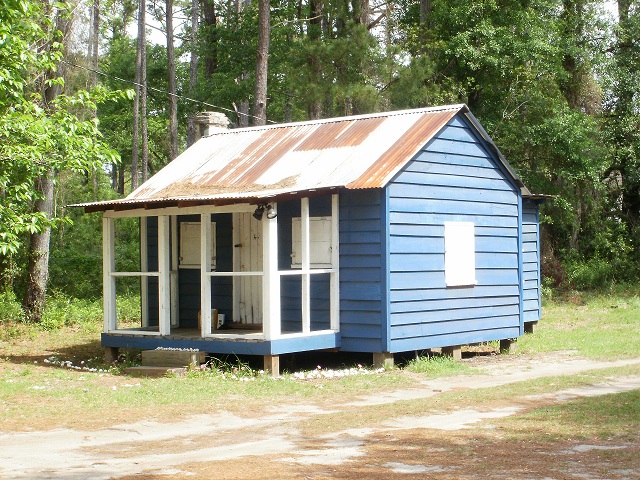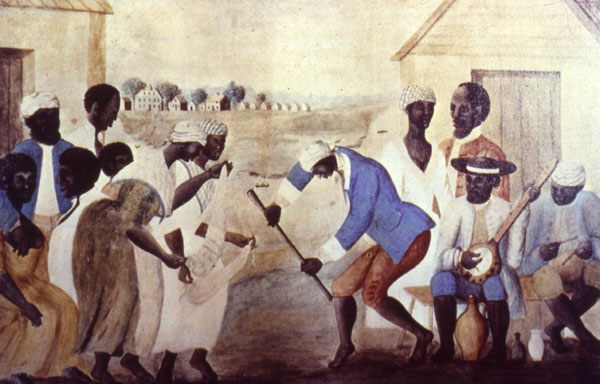Haint Blue, the Ghost-Tricking Color of Southern Homes and Gullah Folktales
Cultural histories of unusual hues.
.
.
.
.
.
.
.
.
.
There was once an old witch-woman who lived in the woods. She was ugly as sin but helpful, and she could fix any number of problems if you asked her politely. Her name was Old Betty and she had one friend, a fat old razorback hog named Raw Head. One day, some asshole hunter stole her pig pal and slaughtered him. She couldn’t let that stand. She pulled out a book of spells, performed some secret incantations and rituals, and poof, she had her friend back. Except he was changed. He had bloody, bear-clawed hands and a raccoon tail. He walked on two feet and his skeleton was a bloody mess of flesh and bones and muscle and sinew. Worst of all, he carried around his own pig head, clutched in his big bear claws. Fortunately, the witch was into all this shit, and so she welcomed Raw Head back into her life and together they went forth, seeking revenge.
Raw Head is perhaps the most hideous of boogeymen—assembled from parts borrowed from various species, which somehow makes him even more fearsome than Frankenstein’s Homo sapiens mix-and-match monster. While the story of Raw Head originated in 1500s England, it really took root in the American South, where Raw Head and his sidekick Bloody Bones became oft-invoked figures used to scare kids and bond adults. According to Appalachian historian Dave Tabler, the word haint can refer to an angry dead spirit, but also to “an undefinable something that scares the bejeevers out of you.” Raw Bones is a haint story, and haint stories are the reason that southern porch ceilings are often painted a pale, sweet, powdery sky blue—a group of light shades known collectively as “Haint Blue.”

Image: Lake Lou via Flickr
In the 1700s, Raw Head and his fellow ghosties inadvertently spawned a design craze that continues today and is celebrated by design bloggers and folklorists alike. Like Millennial pink, Haint blue isn’t a specific color so much as a collection of colors—what makes the color Haint blue isn’t the color itself, but rather how it is used. Robin’s egg blue on a porch ceiling is Haint blue, but Robin’s egg blue in a bedroom is just that—light blue. According to Gullah folk traditions, blue ceilings and blue doors can keep unwanted specters, phantoms, spooks, and apparitions from strolling in through the front door. It fools them into thinking that the door is part of the sky, that the porch is surrounded by water, that the house is protected by something sublime, more powerful and permanent than a coat of paint. It’s trickery though design, and trickery is something the Gullah people knew well.

By Edward W. Kemble (1861–1933) – The Tar-Baby, by Joel Chandler Harris, Public Domain, Link
The Gullah people (also known as Gullah Geechee) came to America as slaves. They were stolen from their homes and brought into the low country of South Carolina and Georgia. They came from different parts of Africa and spoke many different languages, which eventually merged with the English of their captors to form a creole. The folklore and stories of the Gullah people underwent a similar melding and blending. African stories like Bruh Rabbit—the classic crafty trickster underdog—were told alongside European tales of haunted houses and mansions. White Southerners began telling stories from Africa, and slaves (and later their descendants) began telling stories from England, adding their own rhetorical flair along the way.

By David McCoy – Own work, CC BY-SA 3.0, Link
Like these borrowed stories, the tradition of Haint Blue passed from Gullah neighborhoods and settlements into white culture. There are a variety of explanations as to why Haint Blue porches became more common as the centuries wore on. The obvious one is that a light blue porch is a really pretty sight, simultaneously charming and calming. Some people also supposedly believed it could repel bugs. Dumb wasps, the story went, wouldn’t try to build their nests on something that looked so much like the open, uninhabitable sky. (Since the paint was most likely made with lye, it probably did repel bugs, but that had nothing to do with its atmospheric hue.)
Lori Sawaya, an “independent Principal Color Strategist” (whatever that is) is quoted in a blog post published by the paint company Sherwin-Williams saying that, “Porch ceilings have always been blue in the South. People continued to paint their porch ceiling blue because that’s what their grandmother did, and that’s what her grandmother did.” Several interior designers interviewed for a 2017 article in The Washington Post praise Haint Blue for its ability to “bring the outside in,” “put an interesting spin on what would be just a plain white ceiling,” “extend daylight hours,” and “add softness and interest.” In this telling, there’s no mention of Gullah people or their history—just nice paint colors to purchase, nice ideas for nice decor.

By Unknown – http://www.yale.edu/glc/gullah/cont.htm, Public Domain, Link
But while it’s easy to whitewash a ceiling, it’s not so easy to erase the true history of Haint Blue. It’s right there in the name. The word haint may have come from the haunt, but it has become its own separate word—not a mispronunciation of haunt or a synonym, as is often suggested. You couldn’t call a blue porch ceiling “Haunt Blue” because it wouldn’t mean anything, just like you don’t tell haunt stories while kicking back in your porch rocker. The word “haunt” came from the old French hanter (a place frequently visited), which in turn came from the Old Norse heimta (to bring home). But heimta doesn’t equal haunt and neither does haint.
Haint’s its own deal, much like how fella and fellow are distinct words, and gangster and gangsta. (Linguist John McWorter breaks down the differences in an excellent episode of Slate’s Lexicon Valley podcast that I suggest everyone “run like a scalded haint” to listen to right now.) Similarly, Haint Blue has become its own idea, more a custom than a color. It’s a collection of light blues, a group of airy hues that continue to testify, however silently, to both the richly mingled culture and the raw and bloody crimes of the American south.
